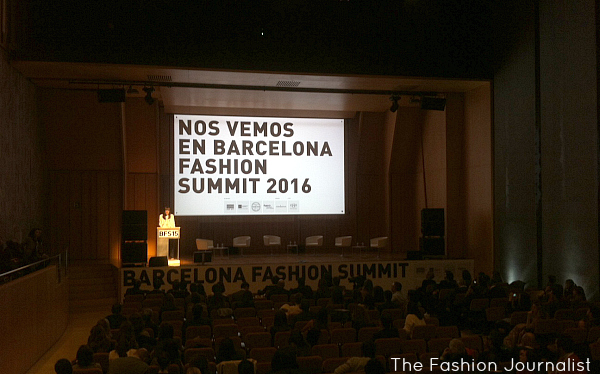What you need to know:
Sustainability and collaboration dominate the Global Fashion Summit: Copenhagen Edition 2025, as fashion leaders confront industry challenges and call for inclusive, cross-continental solutions.
Last week, I had the opportunity to attend the Global Fashion Summit: Copenhagen Edition 2025 — a landmark event that has, year after year, influenced how fashion moves forward. Held at the stunning Copenhagen Concert Hall, this year’s summit gathered over 1,000 representatives from across the fashion spectrum: brands, NGOs, retailers, policymakers, manufacturers, and innovators. The mission? To face the industry’s sustainability challenges head-on and foster collective action.
Building bridges in a divided industry
This year’s theme, Barriers and Bridges, tackled both the roadblocks stalling sustainability progress and the partnerships needed to overcome them. Her Majesty Queen Mary Elizabeth of Denmark marked the opening day with her presence , a nod to just how vital this conversation has become. Over three days, the summit featured 33 sessions and 18 strategic roundtables. The core conversation revolved around five forces shaping the future of fashion: Innovation, Capital, Courage, Incentives, and Regulation. The takeaway was clear: no single brand or country can solve this alone
From silos to shared solutions
A resounding message from the summit was the need to stop working in isolation. Real transformation will only come when competition takes a backseat to collaboration. Brands, governments, producers, and consumers must all get in the same room — and stay there. One of the most powerful voices at the event was Omoyemi Akerele, founder of Lagos Fashion Week. In a panel titled Beyond Fashion Categories, she championed pan-African collaboration as not only an economic strategy but as a necessary reframing of global fashion systems. “Africa isn’t just a sourcing hub or an emerging market. It is a place of rich knowledge, innovation, and cultural leadership,” Akerele said.
Her words struck a chord. Too often, African fashion is boxed in as “ethnic” or dismissed altogether. But as Akerele pointed out, we’ve been living sustainably long before it became a global trend. When panel host Nadir Nahdi, a filmmaker and storyteller shared how he wore his father’s old jeans growing up, I smiled, that story mirrors so many of ours. In Uganda, we wore our siblings’ hand-me-downs out of necessity, yes, but also out of tradition. Our fashion has always valued community, function, and reuse, and that deserves global recognition.
Africa must be part of the sustainability blueprint
Still, sustainable fashion remains a developing conversation in much of Africa. In Uganda, awareness is rising, but we are up against real barriers, limited infrastructure, policy gaps, and a market dominated by second-hand imports. Young designers are eager to work sustainably, but lack the tools and support to do it at scale. This is where global platforms like the summit matter most. They are not just about photo ops and buzzwords; they are about building real networks, sharing open-source tools, and adapting innovation to local realities. Uganda has so much to offer: indigenous materials like backcloth, artisanal techniques, and community-rooted production models that centre people over profit. But participation is not automatic. It requires investment, education, and intentional inclusion.
The spark of real change
What inspired me most in Copenhagen was the authenticity. Brands were transparent about supply chains. Retailers discussed circularity seriously from resale to repair. Startups shared tools freely. There was less posturing, more problem-solving. That energy is exactly what Uganda’s fashion industry needs. Ours is still growing, young, vibrant, and bursting with creativity. But sustainability cannot be an afterthought.
It must be the groundwork. That means policymakers must get involved, fashion schools need to teach differently, and we, the makers, thinkers, and dreamers, must work together. The Global Fashion Summit did not offer all the answers, but it reminded us of something more powerful: that change starts when we stop waiting for perfect conditions and start building imperfect, intentional bridges. I left Copenhagen not with ease, but with hope. Not because the journey is simple, but because the urgency is finally being matched by action.
Takeaways from the summit
• Collaboration Beats Competition: No one can fix fashion’s problems alone. Shared knowledge, tools, and resources are the only way forward.
• Africa Belongs at the Centre: From heritage craftsmanship to innovative practices, Africa has a vital role to play sustainably.
• Education Will Shape the Future: Fashion education must evolve, especially in Africa to equip the next generation of designers with the skills to lead sustainably.
Provided by SyndiGate Media Inc. (
Syndigate.info
).







